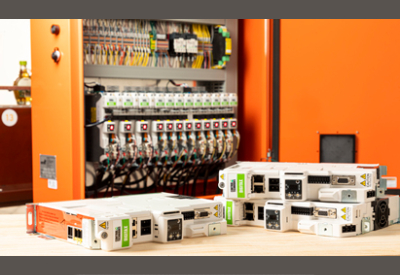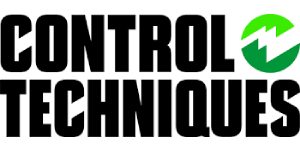Future-Ready Labeling Technology from Control Techniques

May 30, 2022
As one of North America’s leading manufacturers of advanced pressure-sensitive labeling equipment, NITA Labeling Systems, is always on the lookout for ways to improve the performance of its machines. They turned to their trusted control partner, Control Techniques’ Digitax HD M754 MCi, for its latest Sentient Labeling Systems.
When developing its new Sentient Labeling Systems, NITA’s requirements were that the servo drives should be robust and small, while at the same time being powerful and highly efficient.
The Control Techniques team recommended Digitax HD M754 MCI to replace NITA’s earlier servo drive. The compact Digitax M754 has a powerful MCi second processor onboard which brings a whole host of machine design opportunities for the NITA engineering team. The onboard MCi processor executes comprehensive programs that seamlessly control multiple drives and motors simultaneously across real-time networks.
“We particularly like the Digitax Servo drive series for its optimized servo performance and straightforward connectivity – it’s quick and intuitive to configure too.” said Luc Harvey, Chief Engineer.
Compared to its predecessor, the M754 is much more compact, which helps reduce the space needed in control cabinets by up to 25%. Measuring only 40 mm (1.6”) wide, they can be mounted side-by-side, minimizing the footprint and allowing NITA to build the most compact control cabinet possible, resulting in reduced cost. Furthermore, the new drives feature easy-access quick connectors — The result is faster and easier electrical installation.
Moreover, the patented Ultraflow™ ventilation technology provides optimal heat dissipation by expelling the excess heat outside of the cabinet through the rear of the drives. This helps reduce premature wear on all electrical components and allows NITA’s machines to always operate at peak efficiency. The servo motors are protected to an IP67 rating, ensuring prolonged performance in some of the most challenging environments.
Watch this video to see an overview of the problem faced by NITA Labeling Systems and the solution provided from Control Techniques
{videobox}Z3rlwxweQl4{/videobox}
Luc Harvey, Chief Engineer at NITA concludes,
“As a Labeling Machine manufacturer, it is important for us that our systems are adaptable, scalable, intuitive, and connected. The combination of Control Techniques servo drives, and servo motors allows us to offer the latest in cutting edge labeling technology and to future-proof the design for our next generation of labeling systems. Innovation is critical to our company’s success in today’s highly competitive and high-speed market. Customers are more demanding and now rely more than ever on machine performance metrics to make data-driven decisions. Our goal is to provide customers with fully automated, state-of-the-art labeling solutions to maximize their manufacturing productivity and efficiency. Control Techniques deliver top-notch products and services to help NITA achieve this goal; they have been with us every step of the way.”






